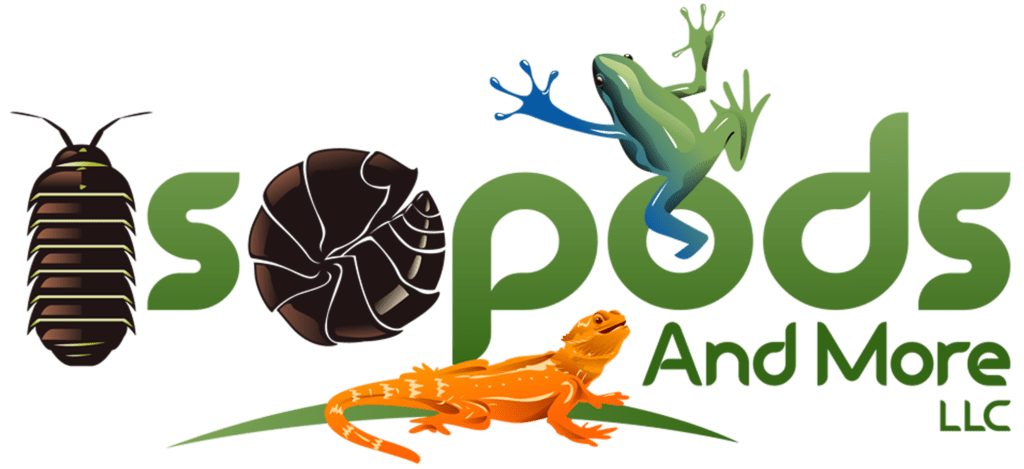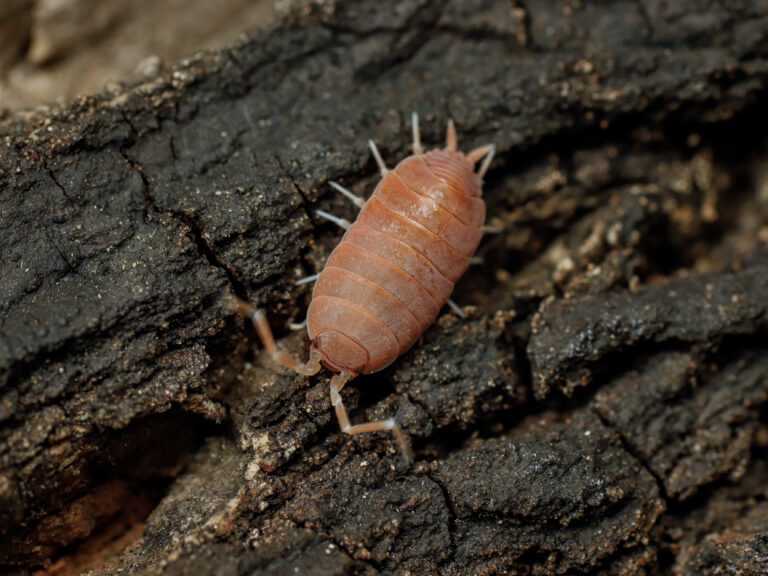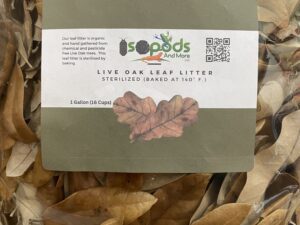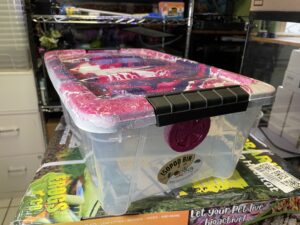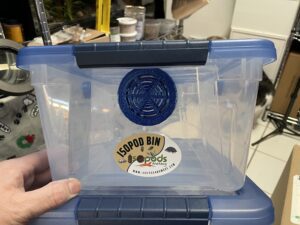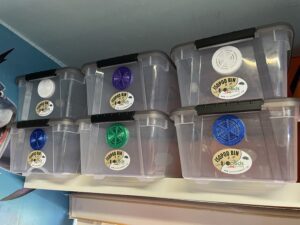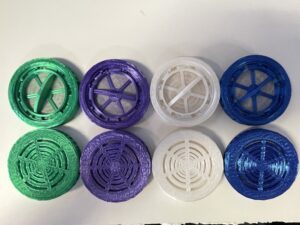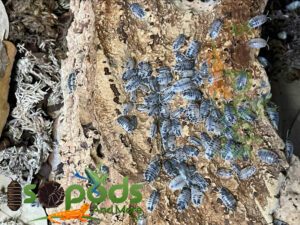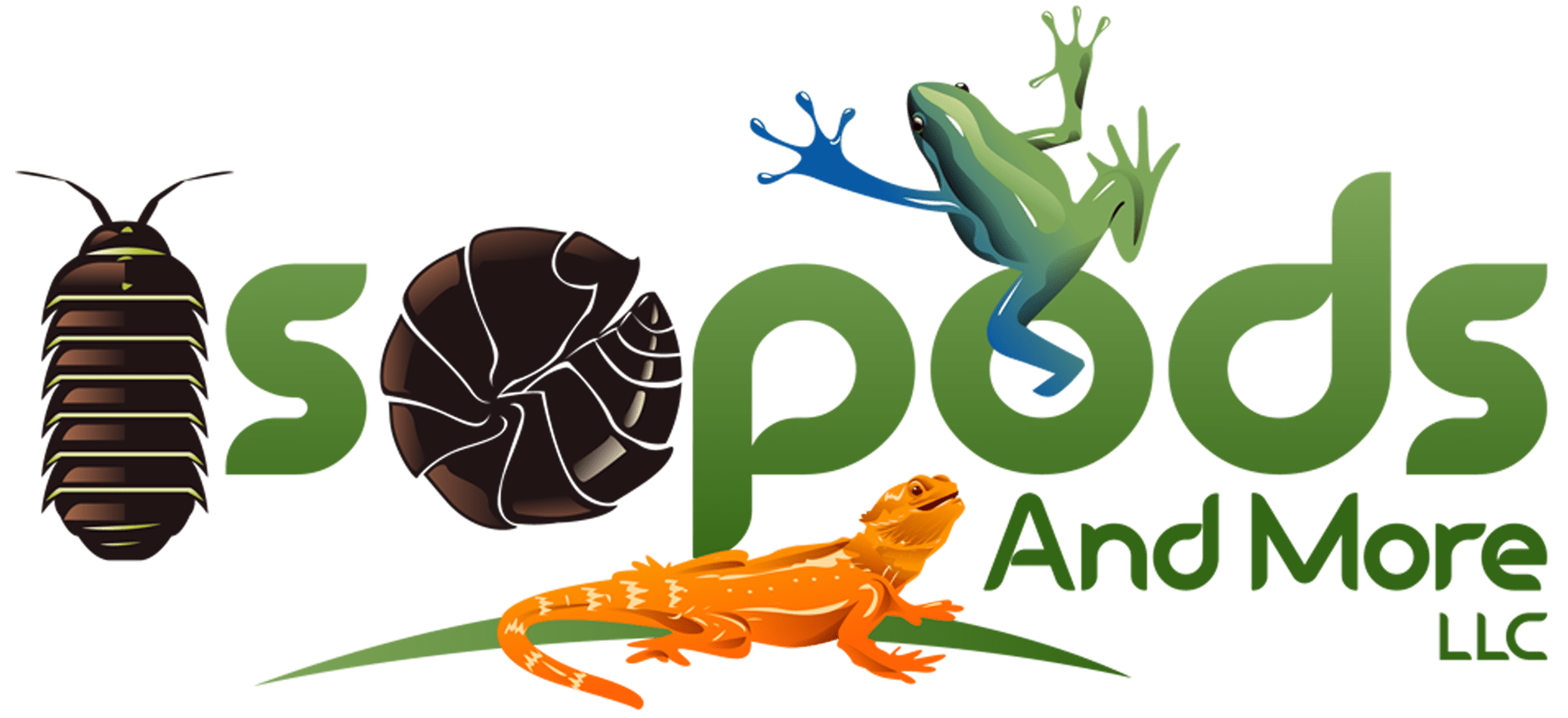Imagine having a vibrant and unique creature in your home that requires minimal care and adds a burst of color to your living space. Look no further than the Powder Orange Isopod! This charming little crustacean is not only easy to care for, but also fascinating to observe. In this care guide, you’ll discover all the essential information you need to know about isopod care and breeding, with a specific focus on the powder orange variety. Whether you’re a seasoned isopod enthusiast or a beginner looking to add a new pet to your collection, this guide will provide you with all the necessary knowledge to ensure the health and happiness of your powder orange isopods.
Introduction to Powder Orange Isopods
What are Powder Orange Isopods?
Powder Orange Isopods, scientifically known as Porcellio laevis, are fascinating and vibrant little creatures that have become increasingly popular among enthusiasts and hobbyists. These isopods, also known as dwarf orange isopods, are a species of terrestrial crustaceans that are commonly kept in captivity due to their striking appearance and easy-care requirements.
Characteristics of Powder Orange Isopods
Powder Orange Isopods possess distinct characteristics that set them apart from other isopod species. They have a vibrant orange coloration, which gives them their name, and their bodies are typically smooth and shiny. These isopods have a small size, growing to about 1 centimeter in length as adults. They are known for their social behavior and are often seen congregating together in groups. Powder Orange Isopods are excellent decomposers, playing an essential role in breaking down organic matter in their habitat.
Setting Up the Habitat
Choosing the Enclosure
When setting up a habitat for Powder Orange Isopods, it is important to select an appropriate enclosure that meets their needs. A glass or plastic terrarium with a secure and ventilated lid is a suitable choice. The enclosure should be spacious enough to provide ample room for the isopods to move around and exhibit their natural behaviors. Ensure that the lid has small openings to prevent any escapes while still allowing for proper airflow.
Substrate Selection
The choice of substrate is crucial for creating a suitable environment for your Powder Orange Isopods. These isopods thrive in a moist habitat, so opting for a mix of organic materials such as coconut fiber, peat moss, and leaf litter is recommended. This substrate combination provides essential moisture retention while allowing for good drainage. Adding a layer of sphagnum moss on top can help retain moisture and maintain humidity levels.
Providing Hideouts
Powder Orange Isopods are nocturnal creatures that require hiding spots during the day. Adding various hiding places, such as cork bark or pieces of wood, will give them a sense of security and enhance their overall well-being. These isopods enjoy exploring their surroundings, so incorporating different textures and shapes into the habitat through rocks, branches, and other natural elements will provide them with enriching experiences.
Temperature and Humidity Requirements
Maintaining the appropriate temperature and humidity levels is essential for the health and well-being of your Powder Orange Isopods. They thrive in temperatures ranging from 68°F to 77°F (20°C to 25°C) and prefer a humidity level of around 70% to 80%. You can monitor and regulate these factors using a thermometer and hygrometer placed inside the enclosure. To maintain the desired humidity, misting the enclosure with water every few days or using a reptile fogger can be beneficial.
Lighting Needs
Powder Orange Isopods do not require specific lighting requirements. They are primarily nocturnal and prefer low light conditions. Providing a natural day-night cycle with ambient lighting from the room is usually sufficient for their well-being. However, if you want to observe their activities more closely, the use of a low-wattage LED light or a moonlight bulb can be added to the enclosure. Just be sure to avoid bright or direct light, as it may cause stress to the isopods.
Feeding and Nutrition
Natural Diet of Powder Orange Isopods
In their natural habitat, Powder Orange Isopods feed on decaying plant matter, dead insects, and other organic debris. As detritivores, they play a vital role in the decomposition process of their environment. To mimic their natural diet in captivity, it is important to provide a variety of organic food sources. This can include leaf litter, decaying wood, and vegetable scraps. These isopods will happily consume these food items, breaking them down and recycling nutrients in the process.
Commercial Food Options
In addition to their natural diet, there are commercially available isopod food options that can provide a balanced and nutritious diet for your Powder Orange Isopods. These specialized diets often contain a mixture of dried fruits, vegetables, and other essential nutrients. It is advisable to supplement their diet with these commercial food options to ensure they receive all the necessary vitamins and minerals for optimal health.
Supplementing with Calcium and Other Nutrients
Calcium is an essential nutrient for Powder Orange Isopods, as it aids in their growth, molting process, and overall shell health. Providing a calcium source, such as cuttlebone or calcium powder, is crucial to meeting their dietary requirements. It is also beneficial to supplement their diet with other micronutrients and minerals. Some suitable options include powdered vitamin supplements, crushed eggshells, and dried seaweed.
Feeding Schedule
Establishing a regular feeding schedule is important to ensure the well-being of your Powder Orange Isopods. Feeding them every few days is typically sufficient, as they have slow metabolisms. Observe their feeding habits and adjust the amount of food accordingly. The key is to provide enough food to sustain the population without overfeeding, which could lead to mold growth or other issues. Any uneaten food should be removed from the enclosure to prevent spoilage.
Isopod Care and Maintenance
Regular Cleaning and Spot Cleaning
Maintaining a clean habitat is crucial for the overall health of your Powder Orange Isopods. Regular cleaning involves removing any decaying organic matter, uneaten food, and feces from the enclosure. This can be done by spot cleaning with tweezers or a small scoop. It is important to regularly inspect the substrate for any signs of mold or fungus growth and remove it promptly. By keeping the habitat clean, you ensure a healthy environment for your isopods.
Preventing Mold Growth
Mold can pose a risk to the well-being of your Powder Orange Isopods, as it can lead to respiratory issues and other health problems. To prevent mold growth, it is essential to maintain proper ventilation and humidity levels within the enclosure. Avoid over-saturating the substrate with water and ensure that there is adequate airflow. If mold does appear, remove the affected area, adjust humidity levels, and monitor closely to prevent further growth.
Avoiding Common Pests and Parasites
Preventing pests and parasites from infesting your Powder Orange Isopods is crucial for their well-being. Avoid introducing any potentially harmful organisms into their habitat, such as mites or other invasive species. Carefully inspect any plants, substrate, or food sources before adding them to the enclosure. Quarantining new additions and regularly monitoring the population for signs of pests or parasites will help prevent infestations and maintain a healthy environment.
Monitoring Population Size
Keeping track of the population size of your Powder Orange Isopods is important to ensure that the enclosure is not becoming overcrowded. Isopods reproduce quickly, so monitoring their numbers helps prevent resource competition and overcrowding. If you notice a significantly high population, consider thinning it out by rehoming some isopods to prevent stress and maintain a suitable environment for the entire colony.
Handling and Transfer
Powder Orange Isopods are delicate creatures and should be handled with care. When handling or transferring them, ensure that your hands are clean and free from any harmful substances that could potentially harm them. It is best to use soft bristle brushes or plastic tools to gently guide the isopods when needed. Minimize unnecessary handling, as frequent disturbances may cause stress to the isopods.
Breeding and Reproduction
Understanding the Reproductive Cycle
Powder Orange Isopods have a fascinating reproductive cycle that begins with the female isopods carrying fertilized eggs in a specialized pouch called a marsupium. The eggs develop and hatch into miniature versions of the adults, known as mancae. The mancae then undergo several molts as they grow and mature into adult isopods. The reproductive cycle can last several months, and the frequency and success of breeding are influenced by environmental factors such as temperature and humidity.
Creating Optimal Conditions for Breeding
To encourage successful breeding, it is important to create optimal conditions within the habitat. Maintaining stable temperature and humidity levels is crucial during the reproductive period. Providing an ample food supply, including a calcium source, ensures that the female isopods have the necessary nutrients for egg production. Offering additional hiding spots and substrate choices can also encourage successful breeding behavior.
Recognizing and Caring for Pregnant Isopods
Identifying pregnant female Powder Orange Isopods can be challenging, as the marsupium is often hidden and not easily observable. However, if you notice a female isopod displaying a more round and swollen appearance, it is a good indicator that she may be carrying eggs. It is important to provide a stress-free environment for pregnant isopods, maintaining stable conditions and minimizing disturbances. Avoid excessive handling to reduce the risk of disrupting the eggs or causing stress to the isopods.
Caring for Offspring
Once the eggs hatch and the mancae emerge, it is important to provide suitable conditions for their growth and development. Ensure that there are plenty of hiding spots and easily accessible food sources within the enclosure. The mancae will typically feed on the same food as the adults but may require smaller-sized pieces initially. As they grow, the mancae will undergo several molts, and it is crucial to monitor their development and adjust the enclosure as needed to accommodate their growing numbers.
Troubleshooting Common Issues
Dealing with Temperature and Humidity Fluctuations
Maintaining stable temperature and humidity levels is essential for the health of your Powder Orange Isopods. Rapid fluctuations in these environmental factors can cause stress and potentially harm the isopods. Ensure that the enclosure is placed in a suitable location away from direct sunlight or drafts, as these can impact temperature and humidity. Regular monitoring and adjusting as needed will help prevent any significant fluctuations.
Addressing Mold Infestations
Mold infestations can occur if the habitat becomes excessively moist or if organic matter is not promptly removed. If you notice mold growth, remove the affected area, adjust humidity levels, and improve ventilation within the enclosure. Ensure that you are not over-misting the enclosure, as excess moisture can contribute to mold growth. Regularly inspect the habitat for signs of mold and promptly address any issues to maintain a healthy environment for your isopods.
Preventing Cannibalism
Cannibalism among Powder Orange Isopods can occur when resources become limited or overcrowding becomes an issue. To prevent cannibalism, it is important to provide adequate hiding spots and food sources to reduce competition. If you notice signs of cannibalism, such as missing limbs or aggression, consider increasing the size of the enclosure or thinning out the population. Additionally, providing a diverse diet and ensuring proper nutrition can help alleviate potential cannibalistic behavior.
Managing Overpopulation
Powder Orange Isopods have a tendency to reproduce quickly, which can lead to overpopulation within the enclosure. To manage overpopulation, consider periodically thinning out the population by rehoming some isopods to other suitable habitats. Regularly monitor the population size and adjust as necessary to prevent overcrowding and resource competition. Maintaining a balanced population ensures the well-being of your isopods and the longevity of their habitat.
Identifying and Treating Diseases
Although Powder Orange Isopods are generally hardy and resistant to diseases, it is important to be vigilant and proactive in observing any signs of illness. If you notice any abnormal behaviors, discoloration, or unusual growths, it may indicate a potential health issue. In such cases, it is best to consult with a veterinarian or an experienced isopod enthusiast who can provide guidance on identifying and treating diseases. Quarantine any affected individuals to prevent the spread of illness to the rest of the population.
Interactions with Other Species
Compatibility with Other Isopod Species
Powder Orange Isopods are generally compatible with other isopod species when housed together in suitable conditions. However, it is important to research and understand the specific requirements and behaviors of the other isopod species to ensure compatibility. Monitoring the interactions closely and providing adequate space and resources for each species will help maintain harmony within the enclosure.
Coexistence with Reptiles and Amphibians
Powder Orange Isopods can coexist peacefully with reptiles and amphibians in a bioactive setup. They help maintain naturalistic environments by aiding in decomposition and nutrient recycling. However, it is crucial to ensure that the reptile or amphibian species is not a predator to the isopods. Additionally, never place isopods directly into the enclosure of a reptile or amphibian, as they may be seen as potential food sources.
Potential Harmful Interactions
While Powder Orange Isopods are generally harmless, there are some potential harmful interactions to be aware of. Avoid housing them with aggressive or predatory species that may view the isopods as food. Additionally, certain chemicals or pesticides utilized in the enclosure or surrounding environment can be detrimental to the isopods’ health. It is important to research and ensure that any products or substances used are safe for the isopods and other inhabitants of the habitat.
Additional Tips and Recommendations
Providing Enrichment
Adding enrichment to the habitat of your Powder Orange Isopods can stimulate their natural behaviors and enhance their overall well-being. This can include creating climbing structures with cork bark or providing shallow water dishes for them to hydrate and explore. Introducing leaf piles, moss, or other natural materials can also provide opportunities for foraging and hiding, mimicking their natural environment.
Observing Natural Behaviors
Dedicate some time to simply observe and enjoy the natural behaviors of your Powder Orange Isopods. They engage in fascinating activities such as burrowing, feeding, and interacting with one another. Watching their social dynamics and observing their natural instincts can be both entertaining and educational. Take the opportunity to learn more about these remarkable creatures and gain a deeper appreciation for their unique behaviors.
Ensuring Proper Ventilation
Proper ventilation is essential for the health and well-being of your Powder Orange Isopods. It helps maintain fresh air circulation within the enclosure and prevents the buildup of excess moisture. Ensure that the lid of the enclosure has small openings or mesh to allow for adequate airflow. Always balance ventilation with humidity levels to create an optimal environment for your isopods.
Obtaining Isopods from Reputable Sources
When acquiring Powder Orange Isopods, it is important to obtain them from reputable sources. Reputable sellers or breeders prioritize the health and quality of their isopods, reducing the risk of introducing diseases or parasites to your collection. Research potential sources, ask for recommendations from experienced keepers, and always inquire about the origin and health history of the isopods before making a purchase.
Preventing Cross-Contamination
To prevent cross-contamination and the potential spread of diseases or pests, it is crucial to practice good hygiene when handling and maintaining your Powder Orange Isopods. Wash your hands thoroughly before and after handling them, and avoid introducing foreign materials or organisms into their habitat. Keep all equipment and tools used for their care separate from those used for other animals or purposes to minimize the risk of cross-contamination.
Conclusion
Powder Orange Isopods are fascinating creatures that offer unique and captivating experiences in the world of invertebrate keeping. By understanding their specific needs and providing suitable care, you can create a thriving and enriching habitat for these remarkable crustaceans. Whether you are a seasoned isopod enthusiast or a beginner, the joy and satisfaction of caring for Powder Orange Isopods are sure to bring endless hours of fascination and education. With the knowledge and guidelines provided in this comprehensive care guide, you are well-equipped to embark on an exciting journey of isopod keeping. Happy isopod-keeping adventures await you!
